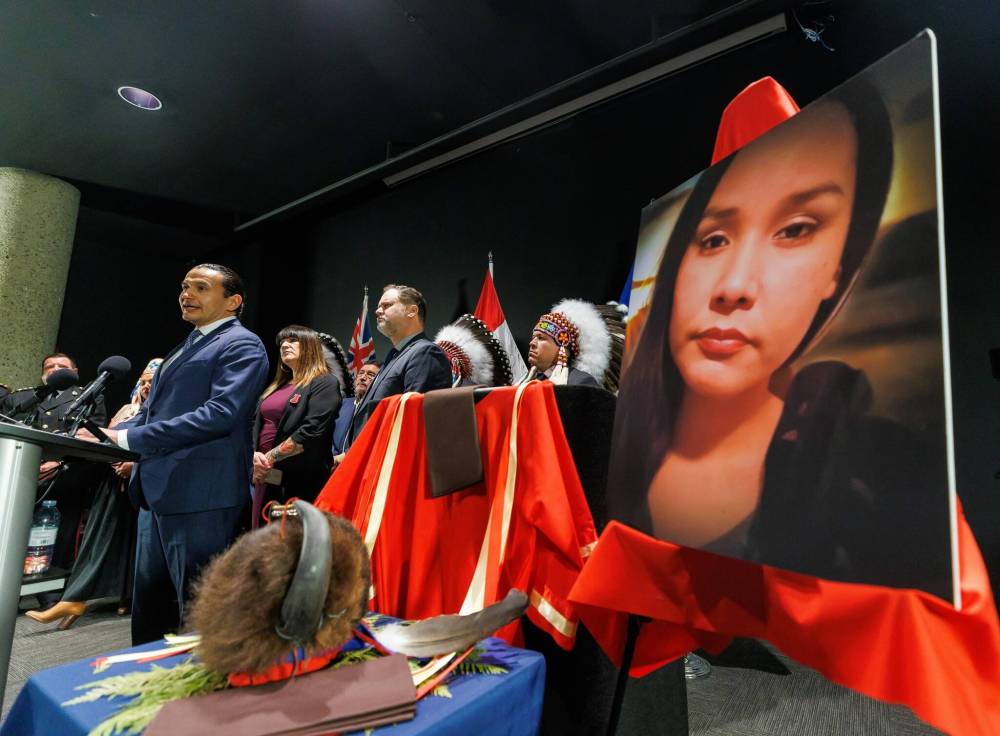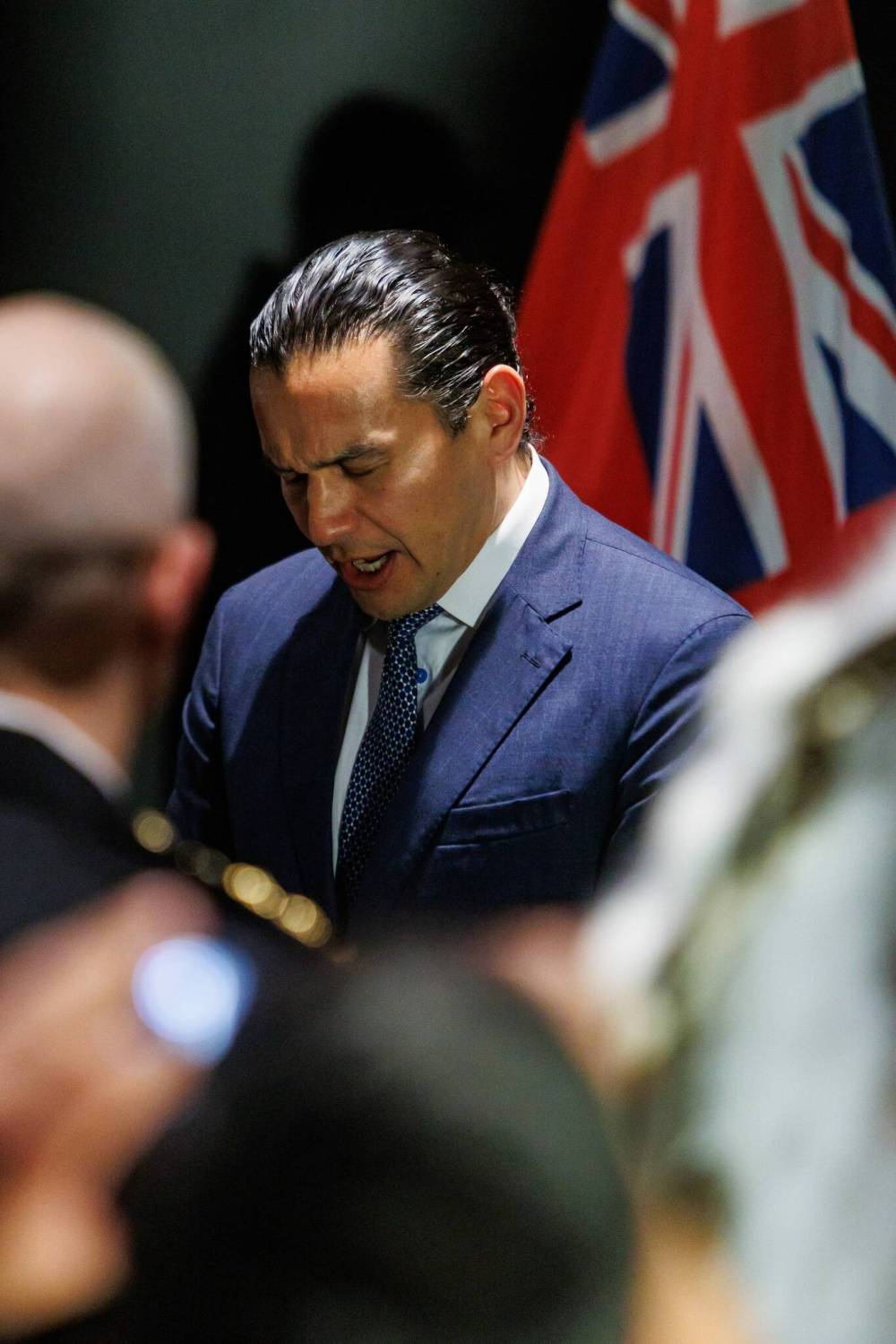Ashlee Shingoose named as serial killer’s victim
Advertisement
Read this article for free:
or
Already have an account? Log in here »
We need your support!
Local journalism needs your support!
As we navigate through unprecedented times, our journalists are working harder than ever to bring you the latest local updates to keep you safe and informed.
Now, more than ever, we need your support.
Starting at $15.99 plus taxes every four weeks you can access your Brandon Sun online and full access to all content as it appears on our website.
Subscribe Nowor call circulation directly at (204) 727-0527.
Your pledge helps to ensure we provide the news that matters most to your community!
To continue reading, please subscribe:
Add Brandon Sun access to your Winnipeg Free Press subscription for only
$1 for the first 4 weeks*
*$1 will be added to your next bill. After your 4 weeks access is complete your rate will increase by $4.99 a X percent off the regular rate.
Read unlimited articles for free today:
or
Already have an account? Log in here »
WINNIPEG — Police have identified the first victim of a Winnipeg serial killer, previously known as Buffalo Woman, as Ashlee Christine Shingoose and say they believe her remains were taken to the Brady Road landfill.
The St. Theresa Point First Nation woman was 30 when she was last seen near a Winnipeg homeless shelter in March 2022. City police went to the First Nation on Tuesday to tell Shingoose’s family and members of the community about the identification, a news release handed out at a police news conference said.
“Our hearts go out to Albert and Theresa Shingoose, Ashlee’s parents, and all the members of St. Theresa Point,” Winnipeg Police Service Chief Gene Bowers said at the news conference.

Premier Wab Kinew speaks at Wednesday’s news conference in Winnipeg publicly identifying Ashlee Christine Shingoose as the first victim of serial killer Jeremy Skibicki. (Mike Deal/Winnipeg Free Press)
Speaking at the news conference by phone, Albert and Theresa Shingoose both expressed gratitude for the efforts to identify their daughter.
“I just wanted to thank everybody for all the work … For thinking of us in your prayers,” Theresa said.
Indigenous community members gave the previously unidentified victim the name Mashkode Bizhiki’ikwe, or Buffalo Woman, in December 2022 after police announced Jeremy Skibicki was accused of murdering four Indigenous women earlier that year.
The Winnipeg Police Service said Wednesday that investigators from the homicide, missing persons and forensic identification units continued their investigation to determine Buffalo Woman’s identity after Skibicki was convicted.
Deputy police chief Cam Mackid said at the news conference that homicide investigators interviewed Skibicki in federal prison last year, on Dec. 17. From that interview, police established that Buffalo Woman’s remains were taken to Brady landfill the month she was killed.
Specific evidence seized during the investigation was later sent for analysis to determine whether the known DNA of the possible victim could be found on the seized items. DNA results, received on March 11 and Monday, identified Shingoose as Skibicki’s first victim.
Investigators believe her body was placed into a garbage bin behind a commercial business on the 1300 block of Henderson Highway.
Skibicki was convicted in July of killing Buffalo Woman (Shingoose), 39-year-old Morgan Harris, 26-year-old Marcedes Myran and 24-year-old Rebecca Contois. The women were killed between March and May 2022.
“I would be remiss not to acknowledge that the initial decision not to search for the remains of Morgan Harris and Marcedes Myran has had significant impact on the families and community,” Bowers said.
“We have had time to reflect for the past three years… While we cannot undo the past, we can learn from it.”
The WPS said it has reached out to the city and the province to start the discussions on “a humanitarian search” for Shingoose’s remains.

“We are early in the discussions in terms of what a search would look like, but the Winnipeg Police Service is supportive of a search being undertaken and is committed to being part of those efforts,” the release said.
Premier Wab Kinew later said the province will search the Brady landfill for Shingoose’s remains.
“I promise you that we are going to search the Brady landfill for your daughter,” he said, speaking directly to the Shingoose family, who were watching the news conference remotely.
“I can’t promise that we will bring her home, but I promise we will try.”
The premier said it will take time to sort out the logistics of how to search the landfill. He noted search efforts at Prairie Green are ongoing, and continue to recover remains and important items related to Skibicki’s victims.
“When somebody goes missing, we go looking, and that includes for Indigenous women,” Kinew said.
Albert Shingoose later asked Kinew to sing a traditional Indigenous song in honour of his daughter, and the premier obliged.
Police previously said it would be too dangerous and difficult to search Prairie Green Landfill for the remains of two of Skibicki’s victims because of the large volume of waste, including toxic material, that had been dumped and compressed.
The potential search became a political issue in the 2023 provincial election campaign.
Partial remains of Contois were found in a garbage bin, and more were found at the Brady landfill. Two sets of human remains were found at Prairie Green Landfill in the Rural Municipality of Rosser in late February during a long-awaited search. They were later confirmed to be those of Harris and Myran.

The Prairie Green search was spurred by the women’s families and Indigenous leaders. The provincial NDP government and federal Liberal government each contributed $20 million for the search after a First Nations-led committee concluded a search was feasible.
In an emailed statement before the news conference Wednesday, defence lawyer Leonard Tailleur, who represented Skibicki at trial, said he last spoke to the convicted killer several weeks ago. At that time, Skibicki indicated he wanted to help identify Buffalo Woman, Tailleur said.
“Which I advised him he was free to do,” Tailleur said.
Mackid said at the news conference that police have found no evidence Skibicki had any unknown victims, living or dead, inside or outside Manitoba.
Mayor Scott Gillingham, Assembly of Manitoba Chiefs Grand Chief Kyra Wilson and St. Theresa Point First Nation Chief Raymond Flett also attended the police news conference in downtown Winnipeg.
The Crown said at Skibicki’s trial that the killings were racially motivated and that he preyed on vulnerable women at homeless shelters. He said in an interview with homicide detectives that Buffalo Woman was the first woman he killed, on or about March 15, 2022.
DNA from a reversible Baby Phat brand jacket was the only evidence police linked to Buffalo Woman, the trial heard. The WPS shared photos of the jacket in December 2022 as part of the first public appeal for information.
Skibicki told police he took the jacket from his victim and sold it on Facebook Marketplace. Police recovered the jacket and collected a scrap of DNA from its left sleeve cuff.
That DNA was compared with a sample provided by Shingoose’s family in January 2023, Albert Shingoose previously told the Free Press. The family was later told the DNA did not match, he said previously.
Winnipeg police forensics identification Const. Jan de Vries reiterated this during the second day of Skibicki’s trial. He told the court police had not been able to find a match for the jacket.
Further testing from Skibicki’s apartment found the DNA profiles of 12 additional women, nine of whom police were unable to identify because their genetic material was not in law-enforcement databases. Among the DNA profiles confirmed in the apartment was that of Shingoose, court heard.

Albert Shingoose travelled 450 kilometres from St. Theresa Point to Winnipeg in January 2023 to lead search efforts for his daughter, who — at that point — had not been seen for 10 months. Her family had grown concerned about her well-being when she stopped posting updates and communicating via Facebook, he said at the time.
The search involved checking homeless shelters, bus shacks, bars, drug houses and other places downtown, and in the North End and West End.
“My wife is worried about her daughter, and also me. Her sisters want to know where (she) is,” Albert Shingoose said during a search in the Spence neighbourhood.
Ashlee’s daughter, Dayna Shingoose, was one of two 14-year-old girls who died in St. Theresa’s Point in March 2023. The pair were found outside after being exposed to temperatures as low as -23 C for several hours.
Theresa Shingoose, Ashlee’s mother and Dayna’s grandmother, previously told the Free Press Dayna was struggling with her mother’s disappearance.
In the Manitoba Legislative Assembly, Progressive Conservative interim leader Wayne Ewasko and NDP deputy premier Uzoma Asagwara offered condolences to Shingoose’s family and community. The assembly then held a moment of silence to honour the young woman before a raucous question period.
» Winnipeg Free Press, with files from Dean Pritchard and Carol Sanders
